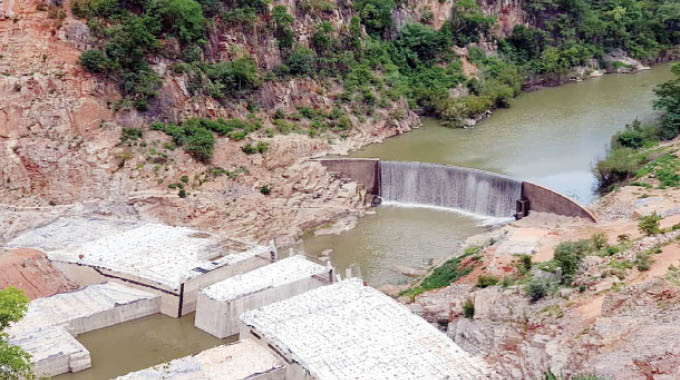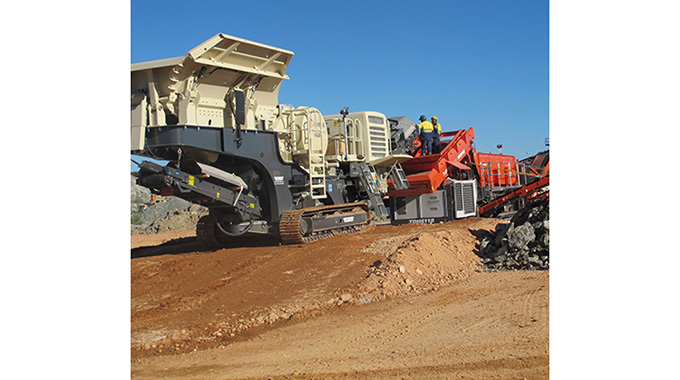Editorial Comment: Byo water scheme best value for money

Bulawayo’s water problems are now in sight of solution, with just another two years of rationing and shortages to cope with before 450 million litres of clean water starts flowing every day down the Gwayi-Bulawayo pipeline.
Government’s commitments were stressed last week by President Mnangagwa when he broke the ground for the pipeline that will lead from the new Gwayi-Shangani Dam now being built at the northern edge of the escarpment in Matabeleland North that will impound 650 million cubic metres of water when full, making it the third largest interior lake in Zimbabwe and holding enough water even in drought years to keep Bulawayo liquid.
Covid-19 has delayed construction of the dam, but with vaccination programmes now started in Zimbabwe, and presumably the Chinese technical team already vaccinated back home, work can shortly proceed safely to ensure that the dam is ready by the end of the year to accept the flood waters from the Shangani and Gwayi Rivers next season.
The Zimbabwean contractors will be busy laying the pipeline while the dam is being completed and starts filling, so that at the start of the following season, at the end of next year when the dam is expected to be full or nearly full with another season of flood waters coming down to make sure supplies are secure, water can start flowing to Bulawayo.
The pipeline will be able to carry a lot more water than Bulawayo needs at the moment and for a decade or two to come. So communities along the pipeline can tap in.
A glance at the map shows Lupane, already a provincial capital and university town and planned as a future city, lies almost on the direct route, so presumably the planners are already including its requirements in their planning,
Irrigation is a potential user of some of the water, but here the costing needs to be sorted out. Water pumped along a 245km pipeline will not be the cheapest in Zimbabwe.
For urban users this is not a serious problem, since the bulk of costs of urban water is the purification and the network of water mains needed to get it into factories and homes.
As the Gwayi-Shangani water is likely to be very clean, with screening the Gwayi end to stop foreign bodies like tree trunks, crocodiles, fish and water weed from messing up the pumps, the purification costs will be low for Bulawayo and Lupane, so the higher costs of raw water will be offset by lower costs of purification.
But, even though the dam is still south of the escarpment, water has to be pumped not only a long distance but uphill. This means that irrigation will have to be carefully planned.
High value crops and cattle watering will probably be cost-effective. But there is still room for a lot of irrigation, gravity fed near the dam itself and also near Bulawayo if Zinwa is creative.
With an assured and plentiful supply of water coming down the pipeline, Bulawayo will no longer need the 20 million litres a day from the Nyamandlovu aquifer, and will only need the supplies of the five small dams near the city for emergency back up. So a lot of this water can be used for farming.
With a single authority, Zinwa, controlling most of the raw water it is just a matter of mathematics to work out how it is priced, controlled and allocated.
The second stage of the National Matabeleland Zambezi Water Project, tapping water from the Zambezi River itself along another long pipeline, will ensure that Bulawayo, Lupane and other Matabeleland towns and future cities can grow without looking over their shoulders for water, so permanent irrigation allocations from the pipeline, the new dam and existing dams can be assured.
The amount of water extracted from the new dam soon and the Zambezi in time will not make any noticeable difference to the Victoria Falls, Lake Kariba or the planned Batoka power stations. We are talking about a couple of percent of the eventual Zambezi flows.
The really big winner in the early stages will obviously be Bulawayo, a city that has had the short end of the stick for pushing three quarters of a century. Most Zimbabweans probably do not know that Bulawayo used to be the nation’s largest city, at one time twice the size of Harare. Its position at the centre of the railway grid allowed industry to develop there first.
Most head offices were in Bulawayo, and even most tourists came through Bulawayo, either on the railway line from the south or down from Victoria Falls, where Zimbabwe’s first international airport was established for the flying boats along the Zambezi.
And until the 1950s, Bulawayo was definitely the economic powerhouse of Zimbabwe. All Harare had was the Government, shops, tobacco, beer, some food processing and a bit of light industry.
A stroll around the older industrial areas in Southerton, east Workington and even the old Imperial Tobacco site in south Msasa, will show just what was there in earlier days.
Federation, the panic decisions by Ian Smith to close the Zambian border and build the Beitbridge railway from Rutenga, and the growing water problems, especially the growing water problems, all hammered nails into Bulawayo’s relative decline.
Yet the city still has the transport links, the closeness to major export markets, the technical training and background, the skilled workforce, more housing per capita and better town planning for that housing, a decent climate and the Zimbabwean rarity of a functioning city council.
Like a good field of crops, it just needs water to grow and flourish and resume its position as the industrial centre and a major powerhouse of industrial growth.
Neglect, rather than anything else, was the main cause of decline and lack of growth, with colonial regimes, and even the First Republic, talking about the water schemes, but doing nothing except draw lines on maps. The first line was drawn 109 years ago in 1912. But except for a few pencils no one spent any money. Until now.
The Second Republic has put up the money, and we are talking about billions of dollars. This is in fact the major infrastructure project in the budget, where talk moves into action. The reasons for the strong Presidential personal commitment as well as Government and Parliamentary commitments are obvious.
Zimbabwe needs to develop fast, the first policy, and that development needs to be even with no one left behind, the corollary to the development policy.
But on pure economic grounds, when you look at development with a clear mind and a determination to make it happen, those billions to water Bulawayo and a chunk of Matabeleland North are fairly obviously the best value for money when kick starting Zimbabwe’s rapid industrialisation. Everything else is there and just needs water.
Now finally the water scheme is already being built. The social gains and the equitable development are extremely useful additions, but the main gain is the national economy, putting western Zimbabwe back to work.











Comments